#aaleah oliver
Photo

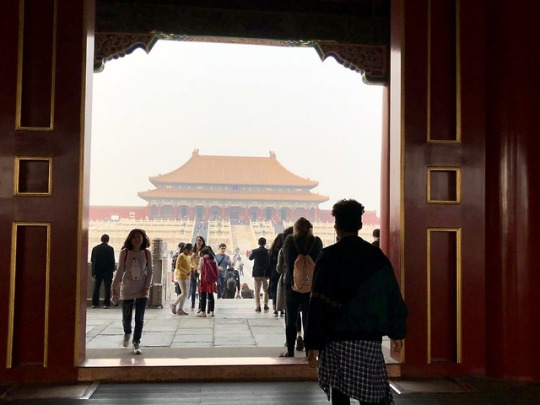
Beijing
by Aaleah Oliver
I had imagined all cities in China to look like the Dongcheng district of Beijing - a mix of traditional Chinese architecture- pagodas and tiled roofing with modern skyscrapers and high- tech facets. But there was more to the area than I had initially realized. The main road ran through a hutong, or a maze-like community with narrow unnamed streets. Though the word hutong can be traced back to 13th C. China as referring solely to the narrow streets between single family courtyard houses, they have come to refer to busy cramped neighborhoods characterized by multi-family homes, and shared public restrooms as a result of rapid urbanization and increased housing demand. In recent years, many Beijing hutongs have been demolished over public health and safety concerns as they are often stigmatized as dangerous and dirty places. Some sections of hutongs have been preserved as part of larger China-wide efforts at cultural preservation in cities although this active preservation finds itself in the midst of a larger debate over what, how, why and for whom certain aspects of Chinese culture should be preserved.

The pavement picked up outside of the barricade disallowing cars and bikes to enter the residential section of the hutong. There, the pedestrian and e-bike only street began, it quickly widened with shops selling elegant qipaos and silk scarves next to shops selling cheap slippers and endless options for food stores on either side eventually making way to the main road, just two blocks from King’s Joy hotel where The LIU Global China Center Students spent our week in Beijing. Every morning, the lobby of King’s Joy would swell with people, from all over of all ages. Many of them, like us, would join the rush hour foot traffic making our ways to the nearby metro station, Forbidden City and Tian’anmen Square.
Tian’anmen Square is a historic gathering place facing the gate to the Forbidden city. It was where thousands of students from all over China gathered to demand freedoms of speech and government accountability in 1989. The students were met with violence, jailed, and many were killed in clashes with police and military forces. The action at Tiananmen in 1989, often called the June 4th uprising, marked a shift in that youth generation who didn’t have a memory of the Cultural Revolution or Mao Zedong. June 4th was a perspective-altering event that disillusioned Chinese youth with their government and the reforms they sought. To enter the Tian’anmen Square area, we walked under a metal detector and put our belongings through a bag scanner. On the Square, plain-clothed police officers walked in between tourists taking photos and group tours. A large flower bouquet sculpture adorned the middle of the square in celebration of China’s National day.
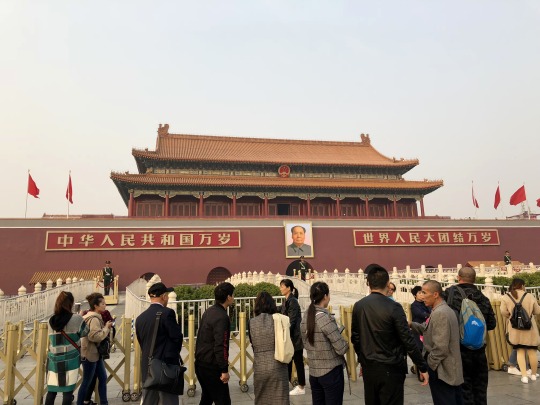
We visited the Square on a clear day and were gifted with sunlight for three whole consecutive days during the trip. But it was during our journey up the Great Wall that the smog made a vengeful comeback. During exercise, you breathe in four times the amount of air that you breathe during normal activities. That meant we’d breathe in four times the amount of smog during our hike up the wall than we had been during our site visits and lectures. Osman, our health and safety guy for the semester passed out 3M medical grade air filtration masks to the six of us students, Lyric our student coordinator and Vivian our program director on the bus ride to the wall. The masks fit snugly over our noses and mouths. They also made it difficult to breathe. By the time we reached the ticket collector, most of us had taken them off.
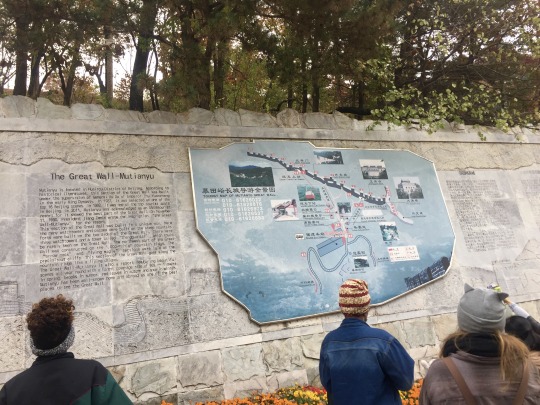
The smog in Beijing has developed as a public health and safety concern over the past few decades in China. With over 300,000 deaths related to bad air quality occurring each year. Though in more recent years, Beijing has been experiencing more clear sky days as a result of stricter environmental protection policies. In partial preparation for the Beijing trip, our Global Studies III: Theories, Issues and Solutions class watched “Under the Dome,” a documentary on smog in Beijing. One moment that stood out to me in the film, was investigative journalist Chai Jing interviews a child who had never seen a blue sky in her lifetime, and who, at the rapid rate of industrialization by any means necessary in China in 2016, might have never known a reality outside of that.
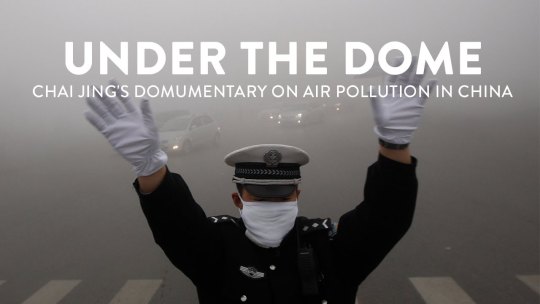
Our visit to Beijing ended in the office of the UNDP, where we spoke with the Program Manager of the Energy and Environment team and his two expert colleagues for Sustainable Development Goals (SDG) localization and youth empowerment and learned about the UNDP’s mandate in China and what the nation is currently doing to eliminate harmful emissions. During the UNDP visit, we learned about hydrogen powered vehicles that produce zero harmful emissions, China’s pilot development program that focuses on sustainably developing the economies of three cities with hopes that the program will be expanded to cities all over China, and the engagement of Chinese youth in environmentally conscious social enterprises. The tone our visit to the UNDP ( United Nations Development Programme in China ) office was overly positive with our speakers generally hopeful of the future of China, despite the time it has taken the country to get there.
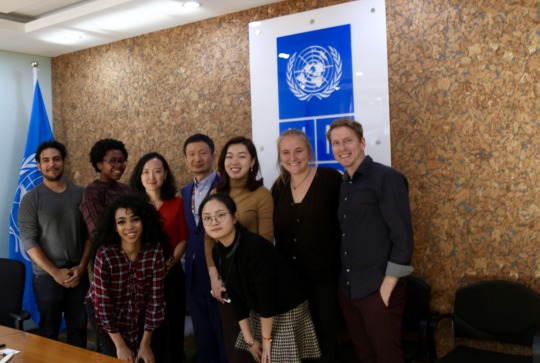
I noticed that absent from the development plans was any initiative directed toward culture, migrant workers or women. I attributed this by and large to path-dependency or the idea that tries to explain the continued use of a model based on historical preference. Historically, women have been left out of national development discussions, as have migrant workers and minority ethnic communities. Contemporarily, organizations are trying to change that.

We met Yiping Cai, an Executive Board Member of Development Alternatives with Women for a New Era (DAWN) in a Beijing cafe on Tuesday afternoon, our third day in Beijing. (DAWN) is a network of feminist scholars and activists who research and document the impact of current trends of development on women in their home countries, participate in discussions and advocate for “ethical and socially responsive development alternatives”. Over coffee, we discussed major issues affecting women in China, one of them being the “leftover woman” campaign -- a state-sponsored campaign aimed at shaming women into marrying earlier, often at the expense of their educational and professional careers as well as their economic and political freedoms.
A lot of efforts of DAWN and the Feminist movement in China is focused on creating spaces for rural and urban women in their governments and societies and empowering them to participate. Yiping Cai introduced to us briefly, the power cube framework, a visual representation of the interrelationships of power dynamics on local, national and global levels.
I found it interesting how forms of power aren’t presented as neutral and are inherently stacked against minority and marginalized peoples. That observation reminds me to survey the power that I have in certain spaces and to make sure that my words or actions do not contribute to the silencing of groups of people or the perpetuation of harmful ideologies.
I ended the Beijing trip holding on to the belief that for communities, nations, and for people, actions can be self-reinforcing, so a step in the right direction, with the right amount of encouragement and accountability, will one day lead to lasting positive change.
0 notes
Text
The erasure of the Black diaspora in religious spaces

The perspective of a Global student is one like no other, and Aaleah Oliver is no exception. A recent Global grad and poet, now working for the Caribbean Cultural Center African Diaspora Institute (CCCADI), walked us through her personal journey as a highschool and then Global student navigating her identity, the world, and self-discovery. She shared a poem with us she had written after visiting the Cartago Basilica in Costa Rica, in which she states “the mouth of this church, dripped in Arabic conquest fashions, doesn’t tell that story of appropriation right quick… when the conquistadors took land in the name of gold, the son of God became the sons of greed, and no one really separated the two.” The feeling she expressed through her words was one of “otherness”. As the daughter of an archpriest, raised with Christianity, religion and spirituality, Aaleah saw a structure drenched in those very concepts, yet couldn’t see herself or her personal experiences reflected within it.
This longing sentiment to see her diaspora better reflected in the institution can be paralleled with that of photographer John E. Dowell, whose series ‘Cotton’ hangs on the walls of the very place where Aaleah works, CCCADI. With his piece “Sending the Message” (2018), Dowell wants to do just that. The hauntingly beautiful overlay of cotton in one of New York City’s churches is mean to represent “the physical violence of the harvesting practice and lived experience of enslavement, the psychic violence of dehumanization that extends past life into deaths marked by mass graves, [and] the hypocrisy of churches and parks associated with a public good—[which] all haunt these cherished, seemingly innocuous public spaces.” In spaces such as these, Dowell sees the erasure of the very real brutalities which built them up, similarly to Aaleah, and wants his art to reflect them. This tale of censorship, especially within religious organizations, is one as old as time itself, now, Black artists and poets are taking a stand to communicate what they and they’re ancestors have always seen, and always known. Aaleah ends her poem expressing, “someone must have told them the God we agreed on enjoyed these bits and pieces, I know it wasn’t me.”
Source:
Dowell, J.B. (2017-18). Cotton. Race, Myth, Art and Justice, The Caribbean Cultural Center African Diaspora Institute (CCCADI). https://artsandculture.google.com/exhibit/race-myth-art-and-justice/8AJiIqLEFB34Jw
0 notes
Text
Schol in Vienna by Nora Gibbons
The LIU Global Europe Center students started off their semester with a chilly and busy trip to Vienna and Budapest. The experiential learning excursions we participated in there mostly focused on visits to intergovernmental organizations, like OPEC and the UN offices. Our last day’s visit was quite different though, and for some students, quite impactful. The group visited a primary school in Vienna. We began with listening to a presentation about the school system in Austria in general, as well as some of the specific practices of this school.
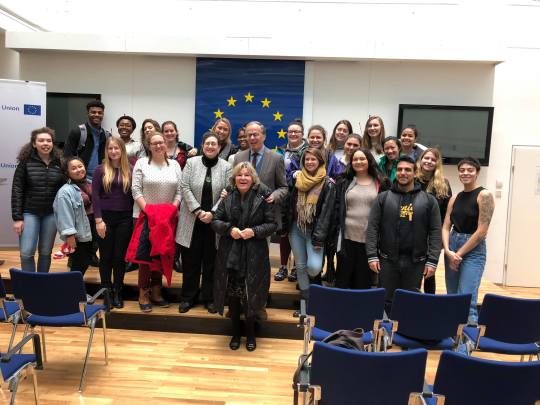
One of the most interesting things for many Global students was the system of age mixed classrooms. Mixed age learning environments are not the norm in most public schools in the US, although they do exist in many alternative learning environments. Psychologist Peter Gray at Boston College has conducted numerous studies on the benefits of this type of learning environments. He summarizes some of his findings in a 2011 article in the American Journal of Play entitled “The Special Value of Children’s Age Mixed Play” as such: “age-mixed play offers advantages for learning skills, culturally relevant information, cultural routines, nurturance, and leadership that go beyond those of same-age play.”
Our class at Global comes from a diverse educational background, so we had many different viewpoints on the concept of mixed age classrooms before this experience. Some of us did were International Baccalaureate students, some took AP classes, some came from Waldorf and Montessori schools, some are self-directed learning and democratic free school enthusiasts. Some of us fall into none of those categories, some a combination of a few. However, after learning a bit about the implementation of this mixed age system we were able to put our previous perceptions aside as best we could, and head into classrooms to observe this in action. We split up and visited classrooms in groups of two or three. Because the teachers in these classrooms have a wide range of freedom in lesson planning, each group of Global students observed very different environments and activities. Although some Global students did not feel that the classrooms they observed were effective learning environments, one Global group, in particular, participated in a very powerful experience. Gwen Lindberg, Seeley Davidson, and Aaleah Oliver observed a mixed age consent workshop of sorts. Below is an interview with them about this experience.

What thoughts or impressions did you have of mixed age learning environments before visiting this school?
SD: I was in Montessori school growing up so I was in mixed-age classrooms until 5th grade. I have mixed opinions but for the most part, it's positive.
GL: I personally think age shouldn’t be the defining factor in class placement. It should be based on each student’s individual preferences, learning style, areas of interest (or particular talent), that sort of thing. If students are placed into classes based on those criteria, that automatically creates mixed-aged learning environments that are more catered towards kids’ needs and desires.
AO: Before visiting this school, I thought that mixed aged learning environments were what happens when a school is underfunded and forced to group students of different ages together in order to save money.
How did you find the overall vibe of the classroom to be?
SD: The room I was in seemed super loving and based on the mutual happiness of all students! It all seemed positive and productive and as though everyone in the space was getting as much as they personally could out of the experience.
GL: I thought this mixed-age class was a really good example of an excellent classroom environment. Students of different ages and backgrounds intermingled with no discernible separation or ostracism (granted this is based on a very brief period of time, so my observations need a lot more evidence). I was particularly impressed with the way some students helped to translate instructions, assignments, or announcements for each other; language barriers did not a pose a problem, as students worked together or just about everything.
AO: The vibe of the classroom was relaxed and focused. Most, if not all, of the students, appeared to be engaged in the workshop
Can you describe the activity or conversation you observed in the classroom?
SD: The activity we walked in on was consent training performed by an outside organization. As soon as we entered the room one of the adults asked the students if they felt comfortable having visitors in the room. One student had been in the bathroom during this process and when he returned he was asked individually. There were three session leaders and three teachers. It was all conducted in German and since none of us speak the language we were pretty lost, but after watching for a bit we were able to infer it was a consent training session. The three organizational staff members were engaging everyone in a conversation about 'good touch' and 'bad touch'. These leaders were acting out a skit about different kinds of touch with various people in their lives. Afterwards was a session where students worked together to identify touches on a worksheet including where they filled in their own answers and made their own scenarios. A high point of this experience was a conversation I had with a teacher about the students in the class and why she thought this kind of education was important. She was super excited to chat about her views, and also reminded me of the personal experiences each student came into that environment with, specifically refugee students, and why this type of workshop is helpful for them. She also talked about her own experience growing up as a first-generation immigrant in Austria and how she uses her story to relate to the children she teaches.
AO: I observed a consent training workshop that appeared to be broken up into section: the facilitators of the workshop would perform a few short skits, then the facilitators asked the students some questions, (that appeared to require some reflection from the students), then the classroom of students separated and began individual work on a handout where different body parts went down the page vertically and feelings were written horizontally. I believe the students had to decide which people made them feel that when they touched them somewhere.
How do you think this activity may help or inform the students now and later in life?
SD: Consent training is important from day one. It should be a required course when kids start school and transition into consent plus sex ed when the time comes. I feel like people have a lot of misconceptions about what consent training looks like, and it wasn’t at all a weird environment where kids were expected to act as formal mini-adults, they were still their goofy ridiculous selves but with a new knowledge that they hadn’t had before that they could now reference in play. These lessons are important because they give people a language for feelings that are difficult to explain or express. Now when they wrestle and play there will be a context for them (and their teachers) to refer back to when these issues of consent come up.
AO: I think this activity will help the students to be aware of and respect their physical boundaries and the physical boundaries of others
Did you have any previous experience with consent training? How did this experience impact you?
SD: Yes, I'm kind of obsessed. I've been looking for a comprehensive consent training course that I feel like is easily translated to different languages and relatable to people of many different cultures for a while now! I don’t think what I witnessed in Vienna was the full answer, but it was incredible to witness firsthand and to get insight into the methods of people trying to accomplish similar goals.
GL: I have never been a part of consent training before, but this seems like an absolutely incredible way of teaching young kinds to be open and comfortable. It acts as both an indicator of possible abuse, and as a way for kids to very concretely lay out how they feel about certain people and certain touch, with no external peer or societal pressure. I sincerely wish this could have been something I participated in as a kid, and I want to help spread this idea to a grand scale.
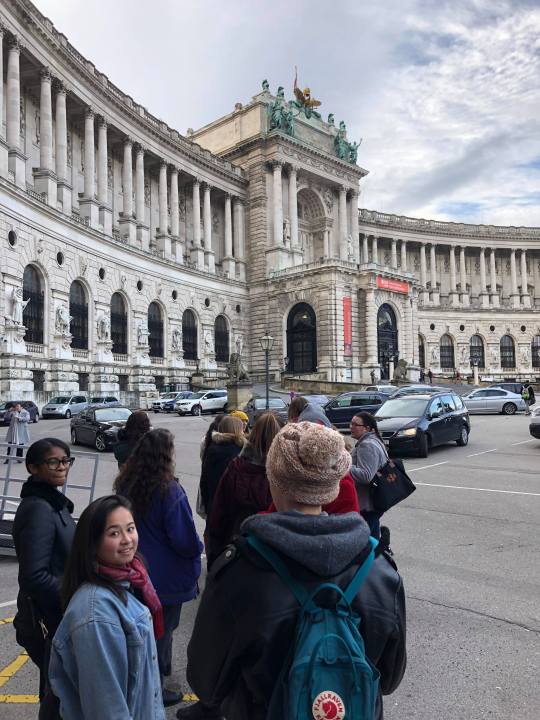
3 notes
·
View notes